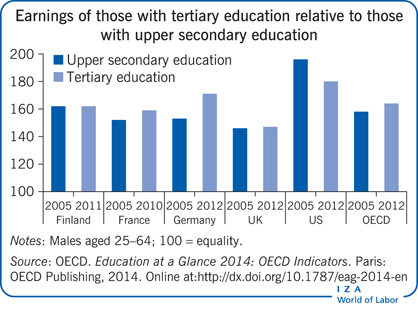Elevator pitch
The quantity and quality of educational investment matter for labor market outcomes such as earnings and employment. Yet, not everyone knows this, and navigating the education system can be extremely complex both for students and their parents. A growing economic literature has begun to test whether interventions designed to improve information about the costs and benefits of education and application processes have an effect on students’ behavior. So far, findings have been mixed, although the positive findings arising from some very carefully targeted interventions give cause for hope.

Key findings
Pros
Information interventions can influence educational investment decisions if the information provided is pertinent to the target group and provided at the right time.
Well-designed information interventions can be low cost relative to other interventions such as tuition subsidies that are intended to increase educational participation.
Some information interventions have been shown to be effective if coupled with personal assistance or mentoring.
Cons
Many information interventions have no effect on student behavior, even though they have been carefully targeted and well designed.
Information interventions are unsuccessful if students face significant other constraints, such as high competition for particular education programs, or if they are unable to adjust their aspirations to match what they can realistically achieve.
Providing information too late in the education process may not allow sufficient time for students to make the necessary prior investments.